|
It’s eight years later and I’m back in isolation again. But this time the whole world joined me.
This week, in March of 2012, my work ended and I went home to begin what I now know to be a four-year period of social distancing. Excruciating pain from deteriorating jaw bones drove me away from people, into my home, and on a journey of solitude and introspection. This pandemic is everything and nothing like those years. Last week I heard myself saying, “I think I need to read my But Pain Crept In book again,” but I couldn’t quite wrap my head around what I meant. I sensed a parallel experience to my years waiting for total joint replacement surgery on my jaw. But honestly, I felt so disoriented last week by the state of our COVID-19 world, and the ever-changing restrictions, that I could hardly remember my name, never mind what I wrote five years ago. In recent days, it seems I have been unconsciously drawing on lessons learned from my pain years. Number one - find something tangible to do so that each day has a feeling of accomplishment. Nearly a decade ago, that included writing every morning and trying new no-chew recipes a few times a week (because mush doesn’t have to mean bland). So what can that look like in this season? I decided on the first day of 2020 social isolation that I would do one new task or something each day that I wouldn’t typically make time for in the course of normal life. My first venture was to clean out a spare bedroom closet where I discovered a bag of the boys’ old hockey and baseball cards. I spread the cards over the kitchen table with the enthusiasm of one on the brink of discovering hidden treasure. An early-career Henrik Sedin card! Had I just funded our retirement? Mario Lemieux! Had I struck card-trading gold? No. Poor Henrik sells for only $7.46. My interest faded quickly and the cards returned to the bag in the closet. My closet-cleaning vibe squelched when I realized second-hand stores were not receiving goods. I really don’t need a pile of giveaway things in open view. They’re better off tucked away in the closet for now. So if not sorting, what? I think that’s when my inner pioneer awoke. I’ll start an indoor garden and create an opportunity to teach our three-year-old grandson about planting, watering and growing. Visions of meaningful conversations filled my mind as we would carefully drop seeds into the tiny holes of the starter trays. I pictured us hunkered over the fresh soil, chatting about favorite foods as we secured our vegetable future. Reality check. He’s three. And carrot seeds are microscopic. And when I asked what he’d like to grow he confidently replied, “Cactus!” We ditched the indoor plan, put on our weather-proof gear, grabbed the onion bulbs, and pre-soaked peas, and headed out to real fun. Mud. Good old rain-soaked dirt eagerly waiting to be spread on the deck, piled on the walking path stones, and periodically put on top of something we planted. And, we prayed that others will keep growing and selling broccoli. I also chased a garbage truck this week. Two, actually. Never done that before. Grayson often runs to the window when he hears the approaching rumble of the trash-eating machine. It was in the neighborhood, we could hear, and we were getting our rain boots on to go for a walk anyway, so I suggested we go looking for the truck. As we neared the end of our street, the sound grew louder. “Hurry, Grandma. We have to run to find it!” So, of course we ran and much to our delight, we found the big green monster at the end of a cul-de-sac. It would have to come right by us in order to exit. I squatted down and answered 17 “why” questions about compost, to the best of my ability, when to our great delight, the 60-something driver honked his horn for us. And then again. And then his female seat-mate, donning bright pink protective ear coverings, waved energetically. It appeared she and her grandpa were also enjoying garbage life. We started walking toward home feeling full of happy garbage vibes. “Grandma! I hear another one! Let’s run!” Of course we ran. Sure enough, along came the garbage garbage truck. We stood three meters off to the side and waited for him to pull up directly in front of us. A young man hopped off and flung bags into the open side. He smiled, waved, then hesitated. “Do you want to push the green button?” he asked with a twinkle. Grayson looked at me with wide eyes. “Let’s do it!” We approached the truck, pressed hard on the magic circle, stepped back quickly and watched the jaws of munch consume the waste. “So cool!” little man exclaimed. We thanked the kind-hearted sanitation expert and went home to wash our hands. I mentioned early on that lesson number one was to put something tangible into each day. Something that I can look at and say, “I did that today.” Having a number one implies there’s more to come. There is. Number two. Name your squirrels. But that’s for another day.
1 Comment
 My apologies for the three month absence. I've been a bit busy. Over the last year, I've had the privilege of leading an initiative in my role as Manager of Education with Food for the Hungry. And this week, it launched! I'd like to introduce you to Ending Poverty Together, an online site full of educational resources contributed by multiple organizations who are doing great poverty alleviation work right here in Canada. It's designed to equip and empower Canadians to grow in our understanding of root issues of poverty and to learn more about healthy helping. Here's the address: www.endingpovertytogether.org and a little introduction. The About page will give you insights into the "why" of the site through both video and text. That's a great place to start! Of particular excitement to me is the collaboration taking place between groups to make this site possible. When you click on the Collaborators tab, you will land on a page highlighting all who are involved and contributing resources. Check out organizations of interest to you by clicking on their logo and see what they have added. And if you just want to dive in and see everything available, the Learning Library is for you. Perhaps you prefer inspirational, challenging, heartfelt pieces about individuals' journey with poverty. I'd encourage you to spend some time on the Stories page. My prayer is that this site will provide meaningful, practical ways for each of us to consider the impact of poverty - spiritually, personally, in our relationships with others, and with this world. Let me know if you have any questions and do come back regularly as additional content is being added routinely. With love and gratitude, Shelaine It’s a well-worn analogy.
You may recall that the ice storm of early ’18 took down our majestic maple tree in the front yard. Planted when our eldest was only a baby, the “family tree” grew with us. It sported five branches spreading out from the trunk, mirroring our family size. Two-fifths of the tree crashed unceremoniously under the load of ice and later an arborist removed the rest, leaving only a memorial stump. Our landscape changed. Ironically, we’ve altered the look of our yard multiple times over the three decades we’ve lived here and I have no recollection of grieving like I did over this tree. Yes, its leaves lit up the street with blazing orange, red, and yellow each fall. Yes, it provided shade from direct sun, cooling us in the heat of summer. Yes, our children climbed it and hung on its branches like little monkeys. Certainly those pieces added to my loss. In June I walked by the stump to see a small shoot emerging from the front of the downed giant. New life from old. Life from death. Analogies flew as I stared at this brave sprout forging its way in the world. I pulled it out. Not many days later, Bill asked about planting another tree and I replied, much to the surprise of us both, “I don’t want another tree.” I know that grief and loss can’t be boiled down to one neatly packaged and summarized nugget. However, I do see one element that rings true in the midst of the complex emotions. Choice. Ice initiated the first loss – something completely beyond my control. Future safety of our home – which I highly value – determined the remainder must come down. Externally imposed change is hard. I recall countless clients throughout my career coaching life who suffered deeply after being fired, downsized, dismissed – whatever term was given. Even if they could own some of the reasons for being let go, their transition process was complicated by it not coming on their timing or initiative. And as was often the case with my clients, after time passed and painful processing work was done, healing began. Perspectives shifted. The “worst thing ever” wasn’t. Some even acknowledged the forced shift to be a gift. Hindsight is like that. I can see the cost of having our tree for almost three decades. Under our lawn is a tightly woven, intertwined network of roots and capillaries that make planting a small annual burdensome. Our flowerbeds are riddled with an almost impenetrable mesh of water-seeking tubes. Areas of our driveway have heaved as larger roots sought water and stability beyond the grass. Who knows how the foundation of the house could have been impacted? I can see the value in the maple going. And, I’m not ready to replace it. I need the stump of reminder a little longer. Maybe next year. With love and gratitude, Shelaine This is a guest post written by my co-worker, Mike Prins. It's a brilliant piece about who we photograph and how we use those pictures. I hope you both enjoy and are challenged to think more deeply about this issue. With love and gratitude, Shelaine http://blog.fhcanada.org/2018/06/hashtagging-poverty.html
#Hashtagging Poverty Hi Everyone!
My husband does research on close relationships, and he's doing a study on personality and listening. Would you be willing to participate? You could win a Starbucks gift card. Completing the questionnaire would take about 15 thoughtful minutes. When you open the link, you will see a consent form to start, and then on to the questionnaire. I think you will find the questions interesting. If you are willing to help, please complete the entire survey. Thanks! Link: www.surveymonkey.com/r/S9KWBLV Also, would you consider sharing this link with your FB friends? The more participants the better. :) Thanks! Shelaine Yesterday, an interview I did with The Write Way Cafe was published on their site. The questions were thought provoking and challenged me to consider my journey in some new ways. Here's the link to the post if you'd like to see it on their site:
thewritewaycafe.blogspot.com/2018/06/meet-shelaine-strom.html The Write Way Café An inviting space where writers and readers engage, share, vent and celebrate. Welcome to The Write Way Café! Read more... Thursday, June 28, 2018 at 1:00 AM | By: The Write Way Cafe Meet Shelaine Strom The Write Way Cafe welcomes Shelaine Strom, who embraced the process of writing as a valuable discipline for self-actualization. When did you first have the thought you'd like to write a book? It had never occurred to me to write a book. That was what my husband did, not me. And then I found myself in a pain-induced time away from work, volunteer activities, and many social relationships. I knew that if I didn’t find something solitary to do at home, I would go stir crazy. I audited a creative non-fiction writing course and began capturing stories from my previous work as a career and life instructor and coach. This led to the publication of my first book, Changing Course: Stories to Navigate Career and Life Transitions. The completion and reception of that book motivated me to write But Pain Crept In, a personal memoir and very different book than the first. What was your path to getting But Pain Crept In written and published? Throughout my life I have journaled as a means of processing life and the season of being off work intensified this activity. At the encouragement of those close to me, I combed through these writings and saw content I felt might encourage others going through times of pain, be it physical, emotional, relational. At the encouragement of my agent, I self-published my first book, and found that to be a positive experience so I opted to do the same for But Pain Crept In. Practically speaking, once the manuscript was completed, I asked about ten different people to critically read and edit, including a writing instructor, university professor, doctor, English teacher, grammar specialist and others. I wanted perspectives and input from a variety of individuals to see how the story resonated – or didn’t. The compilation of feedback and ensuing changes were arduous (and not my favorite!) but worth the effort. I hired a professional graphic designer to create the cover and do the interior layout. She also assisted in solidifying the title and subtitle of the book. Where did the idea for your story come from? The story, being a memoir, came from my life experience and chronicles my pre-pain life as well as the circuitous journey to find answers and relief. The bones in my jaw were disintegrating from a childhood injury and resulting surgery, causing excruciating pain and rendering me unable to speak much, laugh freely, and engage in basic daily activities. I found comfort in stories of other people’s journey through suffering and hoped my story might encourage someone else. Did you face any blocks while writing the book, and if so, how did you handle them? The most significant challenge came as I recognized I was choosing to make some of my most private wrestling completely public. I believed God was calling me to share authentically to remind others in painful circumstances that they are not alone. However, to do so meant exposing my inner world and involved – and honestly, still involves – intentionally choosing to focus on the value to readers rather than on my own feelings of vulnerability. It still catches me off guard at times when a stranger jumps into a discussion about a deeply emotional part of my story. And, it’s often those raw experiences that move and touch readers. That makes the vulnerability worthwhile. What have been surprises you've encountered while writing the book and after? It surprises me how different aspects of the book are speaking powerfully to different readers. For example, one woman wrote to share how my humor resonates with her. Others have identified with emotional processing even though their pain has not been physical. And some comment on a particular story as being moving in a way I never dreamt would be. What did you learn? For instance, what did you learn about yourself, your process, the writing world; about pain, hope, and purpose? The whole book is about pain, hope, and purpose so living the experience and writing the book are intimately intertwined. My story is one of living a full, active, engaged life and being jettisoned into an extended “set on the shelf” period. Identity and purpose had to be redefined. Coming to terms with being instead of doing characterized this time. Learning to trust that God is bigger than my circumstances, expectations, or desires grew, in part, through the writing process. Thoughts and feelings out of my head and onto the screen helped me navigate this unsettling period. Tell us about your writing space and how or why it works for you. I have a writing table set up in our front living space that looks out a window into our back yard. We are empty nesters now so when my husband went off to work, the house was quiet. I found that working in my study felt too much like a mirror of my life of being tucked away from the world. Even though there was no one else home, writing by the window helped me feel connected beyond our walls. And, I love nature so seeing flowers and trees and squirrels inspired me. I continue to have the table in this location even though I am no longer house-bound. It’s just where I write. What are some of your favorite books and why? Being Well When We’re Ill by Marva Dawn changed my life. She is a theologian who has endured intense physical suffering and has learned to change her questions. Her writing inspired me to see the dark pit asking “why” can lead to and begin asking God where He is the midst, and how I might view my situation differently. For example, instead of asking, “Why did those medical papers get lost?” I might consider, “God, are you protecting me from something I can’t see through this delay?” Boundaries by Cloud and Townsend would be a close second. This material has helped me understand how to take ownership of my own life, a particularly critical insight when dealing with chronic pain. I had to advocate for myself, including letting those close to me know what I needed. Growing in healthy boundaries freed me from blame and resentment and assisted me in accepting the circumstances of my life. I also appreciate the work of Brené Brown and have found several of her books meaningful. What are you working on now? I am presently writing a weekly (well, almost weekly) blog. I do not have another book project in the works at the moment but believe there is at least one more book in me. I also do some writing in my job. Would you like to try your hand at writing a different genre? Which one and why? My husband (who has also written two books) and I are talking about co-authoring a humorous book on relationships. It would also be in the non-fiction genre but feels like an exciting challenge to work together on a writing project. If you were not a writer, what would your dream job be? Well, I have a dream job actually. I am the Manager of Education and Professional Development for Food for the Hungry Canada. I get to help Canadians increase their understanding of the root issues of poverty and what healthy poverty alleviation looks like. In addition to facilitating workshops, speaking publicly, and training others to do the same, I have opportunity to write curriculum and articles for FH. I am blessed to be in a position with variety, which I thrive on. What aspect of writing gives you the most trouble? Honestly, it’s getting my butt into the chair. Once I sit down and enter into the writing zone, I love it. Since I’ve gone back to work I have largely lost my morning routine of breakfast and then getting right to writing. I find that without the consistency of that schedule - the time that is dedicated and protected for writing – other things crowd it out. I’ve also come to realize that writing is actually a spiritual discipline for me. It slows me down to a more contemplative pace and quiets my soul and active mind. Being unemployed allowed for five or six mornings a week of solitary creating. Now I’m satisfied if I can do so once or twice a week. I’m simply in a different season with competing priorities. Not bad, just different. What or who has been instrumental in or to your writing journey? My husband, Bill, is my biggest fan and cheerleader. We spent many a Saturday morning sitting by the fire engaged in what we’ve come to call “mutual edit-fication” sessions, where the week’s writing met the red pen. He is a gracious, honest, and skilled editor who believed I could publish long before I embraced that goal. There would be no books by me were it not for him. Loranne Brown, the professor who taught the writing course I audited, was also instrumental in me owning an author identity. She challenged me to shift from spoken storytelling, which I grieved having to let go of, to written tales. She also encouraged me to attend the writing conference where I met my agent and more fully owned my writing skills. We expect life to follow a patterned path with rises and dips along the way. Growing up, high school, starting on our own. Maybe we will meet someone, find meaningful work, raise a family, settle into comfortable community with close friends. We don’t expect career-ending pain. Identity-altering surgery. Faith testing disruption. In But Pain Crept In, Shelaine Strom shares her sojourn from vibrant vistas to deep valleys as jaw joints crumble and bones splinter. Where does one rest, breathe, revive when pain reigns? When does one quit, wait, try to go on? How does one lean on family, friends, even strangers to endure? And where is God in the midst? In her winsome and honest way, Shelaine tells of travelling between hurt and hope, from agony to plains of purpose renewed. Through tears and humor, her storytelling signals gratitude and grace, and no simple answers to the problem of pain. Amazon Amazon Canada https://www.shelainestrom.com/but-pain-crept-in.html Book's FB page Shelaine Strom resides in Abbotsford, BC where she and her husband, Bill, raised their three sons. She works part time as Manager of Education for Food for the Hungry and writes weekly on her blog, In the Midst. Birds are meant to fly.
When a mom-bird lays her eggs, she does so in a softly-lined nest. As her little ones crack through their shells they are met with a feathered world, padded to ease them into the maturing process. Mom feeds, nurtures and notes their growth. And then, at the appropriate time, she makes changes because she knows her offspring can’t stay in the nest forever. Sarah Bessy, author of Out of Sorts writes, “When I was preparing to leave home, my mother used to joke about ‘putting prickles in the nest.’ She had read somewhere that when the time comes for baby birds to learn to fly, the mother birds put sticks or thorns in their nests. By making the nest uncomfortable, the mother bird is actually giving her babies a gift: the gift of flight and growth. Discomfort causes the baby birds to embrace their fundamental self as one who takes wing.” …embrace their fundamental self as one who takes wing. We have been fortunate to have all of our sons live within an hour of our home since they moved out over the last few years. However, last Friday our youngest son and his wife drove off with their little red car packed to the roof. They have moved to Ontario – four provinces away. Watching them pull away flooded me with emotion. As the one left behind, it’s difficult to see beyond the losses. We’ll miss their presence at our monthly family celebrations, and I’ll grieve not working alongside Eric at Food for the Hungry. We won’t share dinners or spontaneous outings or get to hug them nearly as often. But as they waved, I also felt excitement for them. The grand adventure of being young and heading into a new season, establishing a home, entering a Master’s degree program for Eric and new work for Riley, is exhilarating. I’m genuinely happy for them. And, nothing will ever be the same. That sounds a bit melodramatic because I know that’s true of every day we are given. I’m always older tomorrow, a bit more experienced in something, even when the days are ordinary and regular. Then big transitions hit and the implications of decisions made by others land squarely in my lap. Of course I don’t want my kids to live far away. But I also don’t want them to stay close if it means missing something God is calling them to do. Separation is hard. But I know in my core that my role is not to feather the nest to keep my babies in. My job is to free them, to bless them, and to celebrate winged flight. I know that. But it doesn’t make it easy. With love and gratitude, Shelaine Fast lane, here we come.
Recently my husband and I became card-carrying members of the Nexus club, the Canadian/US border’s version of a Disney Fast Pass. Last week, we hopped in our car and headed south to catch a flight from Seattle to Minnesota to visit Bill’s mom. We calculated our travel time factoring in long weekend line ups, but with a knowing smile that we could now use the zip-on-through lane. We left the house shortly after 7:00 a.m. and rounded the curve approaching the border, confidently taking the Nexus lane, passing by car after truck in the regular line up. “Bill, it’s closed. There’s pylons up ahead.” We shared an “are you kidding me?” look as our glee turned to humiliation. We were those people. But not on purpose. It was an honest mistake. I rolled down my window and made eye contact with a 60-something woman in the white sedan beside us. “Would you mind letting us in the line, please?” “No. Nexus doesn’t open until 8:00,” she replied. “We didn’t realize that. This is our first time using the Nexus line,” I responded contritely. “It’s every traveller’s responsibility to do research ahead of time and know the rules of Nexus,” she reprimanded sternly. “Back up.” With that she closed her window. Wow. She was right, of course. It was our job to know the hours of operation of this new program, along with all of the other expectations. And I don’t know what’s been happening in her life. Perhaps she is a border regular who sees people abusing the system and we were the last straw. Maybe she lost her job last month. For all I know, her dog could have bitten her right before she got in her car. It’s also true that she has no idea the hamster wheel I’ve felt on these last couple of weeks. Researching Nexus specifics—when I already knew the general border hours—didn’t make my top ten things to do. It never crossed my mind. But none of that matters because we tend to judge others on their actions and ourselves on our intentions. I know that. I teach that. Yet, she got under my skin. I confessed to Bill that I wouldn’t be sad if she got pulled in for questioning. He raised an eyebrow and I knew I needed an attitude adjustment. So what was going on that kept me from brushing off her unwillingness to make space for us? Grace. There was no grace. We weren’t trying to buck the system or budge into line to save time. We made an error and when I dared to reach out, I wasn’t only refused help, I felt shamed by a lecture dripping with condescension and superiority. It’s been a good reminder to me that all of my interactions with people matter, and that I want to be one extending grace, not condemnation. I only hope that the line-lady encounters people who are willing to model kindness to her when she needs a break. With love and gratitude, Shelaine For women and girls in Cambodia, a menstrual period can put a full stop to life for a whole week every month. This young entrepreneur is changing that in her community.
Sreilak missed a week of school. Again. She’s not alone. Each month, young women around the world are absent from educational opportunities because they can’t afford feminine hygiene products. They can’t leave home during their menstrual period. But a group of young women in Cambodia are changing this reality. On my recent trip to Tasiem Village in Cambodia, I met Kim Houy Hor, the original seamstress for the recently established re-usable sanitary napkin business. This is a first on so many levels. This business grew out of the first Savings and Loans group established for youth and it’s an entrepreneurial endeavour run by young women, serving women. But the firsts don’t end there. Twenty-seven young women each contributed $12.50 to become stakeholders in the business, which has already seen a net profit of over $300, an unimaginable amount of money in a materially impoverished area. The young women have purchased sewing machines and stocked their shelves with products needed to manufacture the re-usable pads. Their enthusiasm and passion has been contagious. The elders got on board when they saw benefits for the entire community— reliable employment and income; increased population stability; and young women attending school regularly. Leaders pooled resources and constructed a building to house the sewing machines and materials, creating unity and a sense of village pride over the young women’s accomplishments. Production of the sanitary pads began in April of 2017. Each hand-made, fabric carrying bag contains two pad holders and six cloth liners. The liners are made of thick, soft fabric and have a moisture barrier sewn into them to prevent leaks. These products are sold with two Ziplocs as well, which girls can carry used pads in. They’ve thought of everything! And imagine a year’s worth of feminine hygiene products costing $2.50 per year or less. These packages are sold for $5.oo and last at least two years. But income generation and affordability are just two measure of success for this project. Kim Houy Hor and Food for the Hungry staff beamed as they spoke of how these napkins reduce waste and are therefore good for the environment. They shared how the kits are proving to be an open door to discussing women’s health issues in their community and beyond. And they proudly noted that this product is chemical free, offering a healthy and safe alternative that doesn’t have to be purchased monthly. But perhaps the most glowing report is that young women are free to attend school, participate in activities, and learn practical skills for future employment. It’s already clear that Kim Houy Hor is an excellent seamstress. I would say her marketing ability is growing as well. As I held the cloth bag and examined the pads she asked with a wide smile, “How many would you like to buy?” 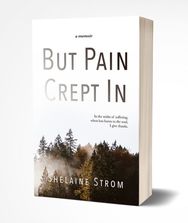 The Word Guild Is Pleased To Announce The 30th Annual 2018 Word Awards Short List Honouring the Best of Canadian Christian Writing from 2017 TORONTO, ON — (CANADIAN CHRISTIAN NEWS SERVICE) — Canada’s best writers who speak into Canadian culture with a Christian worldview will be honoured and celebrated on the evening of Friday, June 15, 2018... CHRISTIAN – NON-FICTION LIFE STORIES · Shelaine Strom; But Pain Crept In (In the Midst Publishing) · Paul Boge; Hannah’s Hope. A Mully Children’s Rescue Story (Castle Quay) · Earnest Nullmeyer; How I Triumphed Over Multiple Traumas With a Smile on My Face, Sparkle in My Eyes (Castle Quay) |
In The MidstAuthor:
|

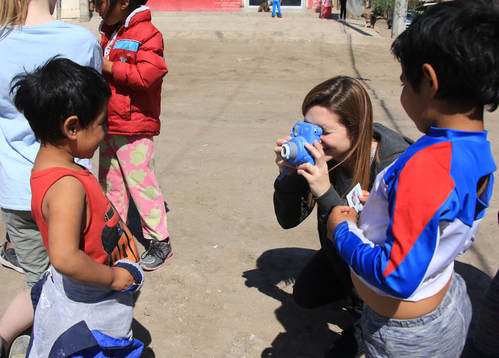
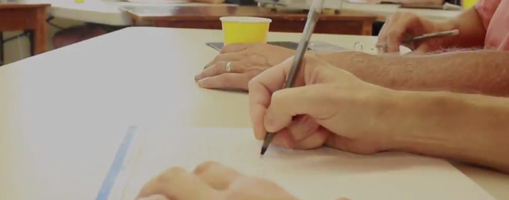
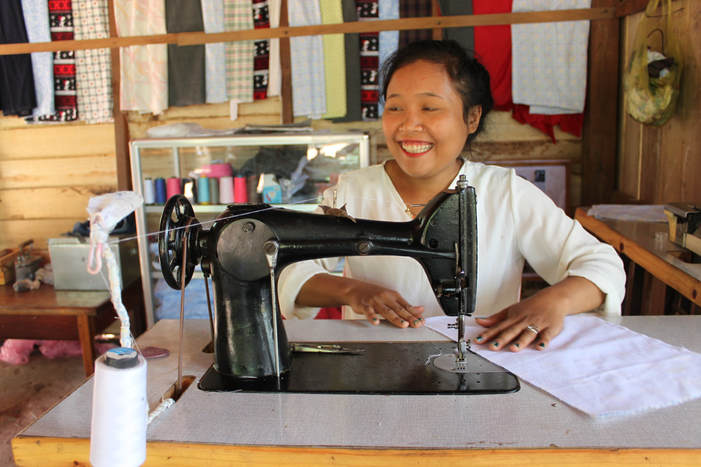
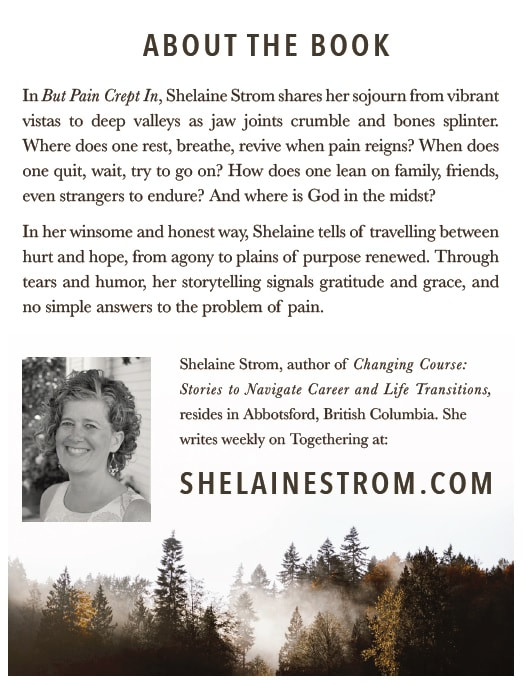
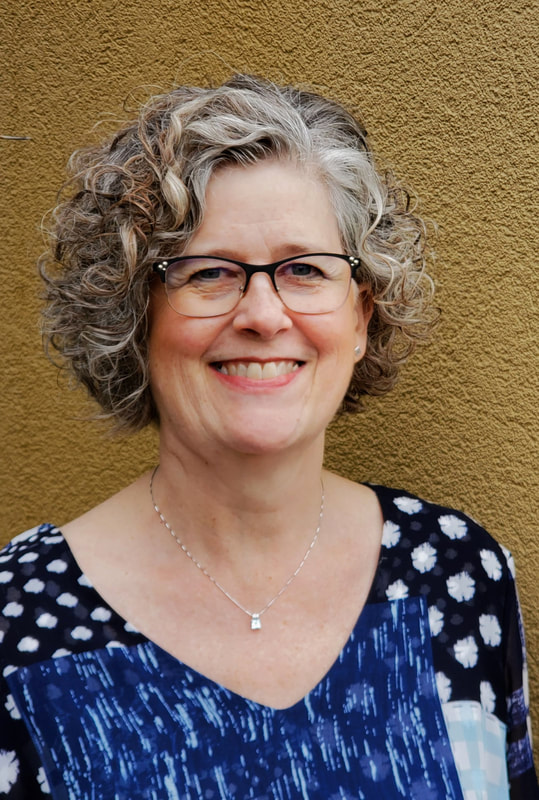
 RSS Feed
RSS Feed